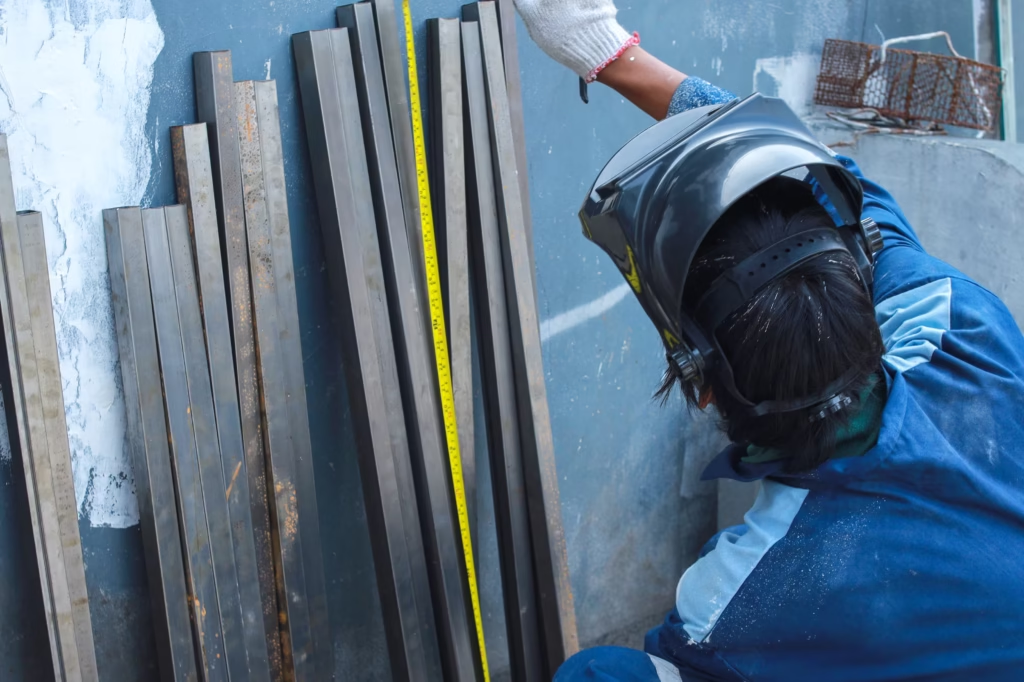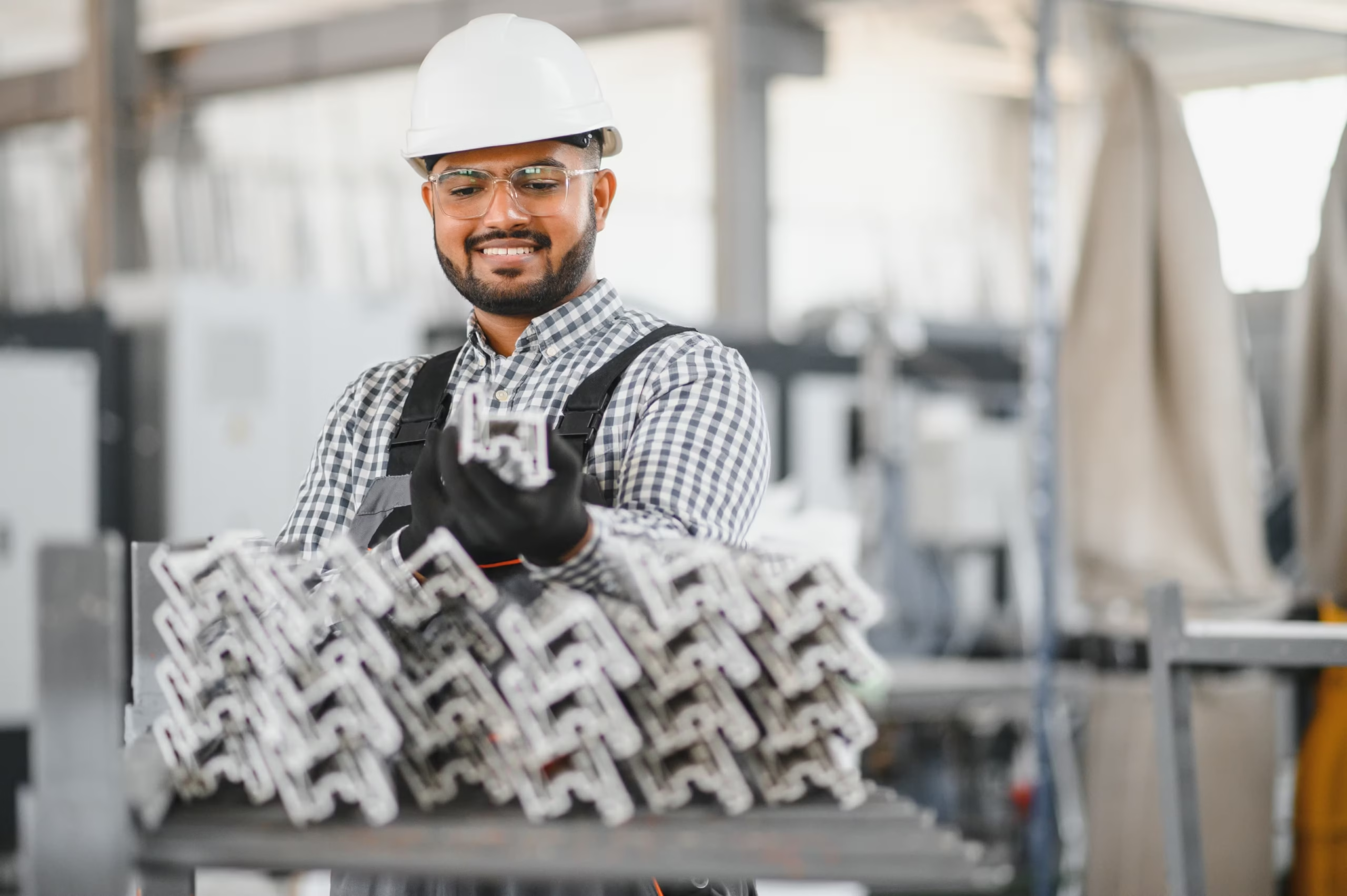Steel is not another material in construction; it is the DNA of modern engineering. Steel grids every bit of their structure, from skyscrapers to suspension bridges, and finely engineered tools and systems for cladding.
But since steel is the most precious alloy, what makes it vital? Cladding believes that a thorough knowledge of the properties of steel is the first step toward selecting materials that perform, last, and look good.
The guide will look into steel’s mechanical and physical properties, varieties of steel used in the industry, and why it continues to be among the most widely used materials worldwide.
1. What Is Steel?
The term “steel” refers to any alloy of iron and carbon and may include many elements such as manganese, chromium, or nickel, depending on its application.
When it starts life as iron ore, it goes through processes that render a material capable of withstanding the greatest stress, the highest temperatures, oxidizing, and corrosive environments.
But the word steel stands for many different products. It includes mild steels, high carbon steel, tool steel, stainless steels, and weathering steel, all differing from one another for different uses.
Through proper steel, strength is invested into the project, whether it is facade cladding, bridges, or industrial frameworks.
You may also like – Steel Roof Sheets for Home
2. Mechanical Properties of Steel: Strength in Every Strand

The mechanical properties of steel determine how the material is loaded or stressed under force, pressure, or impact, which are critical factors for any application related to a structure.
a) Tensile and Yield Strength
Steel can boast high tensile strength and withstand great pulling or stretching forces without deformation. This property is truly vital in structural steel for buildings and bridges.
Yield strength- where deformation begins- varies according to carbon content and treatment, so engineers can select steel types according to load requirements.
b) Hardness and Resistance to Wear
The hardness of steel decides its resistance to wear, crushing, and surface deformation. For instance, tool steel is heat-treated to be hard for use in cutting, drilling, and shaping operations.
c) Ductility and Toughness
That is, while strong, steel is also ductile enough to bend and be stretched without rupture. The ductility allows steel structures to absorb shock (earthquakes or heavy loads) without sudden failure.
Toughness, the process of resisting failure under stress, offers another level of protection.
d) Fatigue and Creep Resistance
If fatigue resistance is considered paramount, then it is mostly because it has to do with long-term application in railway infrastructure or offshore platforms.
Unlike other materials, steel simply does not get weaker with repeated stress over time. In the same mold, it would resist creep, namely, slow and permanent deformations arising from long-term exposure to temperature and pressure.
Also Read – Pre-Fabricated Steel Buildings in India
3. Physical Properties of Steel: More Than Meets the Eye
The physical properties of steel help define how it behaves in different environments and design conditions.
a) Density and Strength to Weight (Specific Strength) Ratio
Steel has a density of about 7.85 g/cm³. It is thus heavier than some materials, like aluminum, but the strength-to-weight ratio makes steel preferred for thin-walled structures. The thin sections are perfectly capable of standing up to strength requirements.
b) Thermal Conductivity
Thermal conductivity varies grade by grade for steel. Stainless steel and weathering steel are generally selected when temperatures fluctuate or when resistance to fire is a consideration.
c) Electrical Conductivity and Magnetism
Conducting electricity with moderate efficiency and being generally magnetic are not the prime properties of steel. These properties are, however, fundamental in power plants, transformers, and shielding arrangements, among others.
d) Corrosion Resistance
Carbon steels corrode when exposed to moisture unless such a technology has been used to prevent corrosion. In contrast, stainless steels resist corrosion owing to chromium and nickel additions.
Meanwhile, weathering steel can produce an oxide layer that acts as a protective shield so that it can be used for exposed structures.
4. Types of Steel and Their Core Characteristics
Understanding the types of steel and how their compositions influence properties is key when selecting materials for specific environments.
| Type of Steel | Primary Features |
| Mild Steel | Low carbon, excellent ductility, cost-effective—ideal for general construction. |
| High Carbon Steel | Extremely hard and strong, lower ductility—perfect for cutting tools, wires, springs. |
| Tool Steel | Hardened for durability and cutting—used in die-making and industrial tools. |
| Stainless Steel | High corrosion resistance, hygienic, and aesthetic—used in architecture, kitchens, and labs. |
| HSLA (High Strength Low Alloy) | Superior strength with lower weight, great for automotive and structural uses. |
5. How Heat Treatment Alters Steel Properties
Heat treatment significantly affects steel performance, as it is a controlled process to alter the steel’s internal structure to achieve desired mechanical characteristics.
Depending upon its intended use, heat treatment enables an engineer to modify the steel’s hardness, strength, ductility, or toughness.
- The annealing process includes heating steel to a temperature and then cooling it slowly. The annealing process softens the material, relieves stresses, and increases ductility, making formation, bending, or machining operations easier.
- Quenching refers to the rapid cooling of the hot steel in water, oil, or air. This creates a rigid and strong steel, suitable when wear resistance is required.
- Tempering is the process that occurs after quenching. It usually involves reheating to some intermediate temperature to reduce brittleness while maintaining strength and toughness.
At Cladding Projects Limited, we understand that very high standards have to be set for modern steel alloys.
Heat treatment is considered of primary importance in producing steel that not only meets the requirements of the projects but also shows a higher level of performance in both durability and safety.
6. Why Steel Remains the Material of Choice

Steel, being common and widely used, has nonetheless been judiciously chosen for its unique qualities such as strength, versatility, and reliability.
Thus, the adaptability of steel has become the yardstick against which the construction and energy industries are measured.
In terms of structural purpose, steel acts as a medium through which the ambitious dreams of design-work skyscrapers, bridges, and industrial structures that intermingle with resilience and subtle beauty come true because of an enormous strength-to-weight ratio.
Steel, therefore, retains its performance for a long time under dynamic loads and adverse environmental situations.
Of course, steel in cladding systems stands for aesthetically appealing corrosion-resistant finishes that protect the structure and uplift its visual appeal.
It finds use in prestigious commercial developments and gigantic civil engineering projects that demand long-lasting durability and pure architectural impact.
The sphere of its application is even greater: transport, marine, energy industry, and industrial sphere, where materials must withstand enormous stresses and exposure to various substances.
We have worked with every primary steel type at Cladding Projects, designing solutions representing functionality and innovation.
Simply put, steel remains the choice of material where strength, style, and sustainability have truly mattered.
7. Sustainability and the Future of Steel in Construction
In the eyes of an environmentally aware population, sustainability cannot be merely an option. Steel, luckily, fits right in with this new mandate.
Steel is 100% recyclable without ever losing its quality. Every time steel is recycled, its strength, structure, and reliability remain intact, limiting materials from going to waste while minimizing environmental pollution.
Ecological advances in metallurgy contribute to creating eco-friendly steel alloys with low carbon emissions that builders and manufacturers can use in registering for green certifications and achieving sustainability goals.
Manufacturing-island fabrication, offsite assembly, precision cladding, and other new construction technologies work perfectly well with steel.
Hence, it all means faster build times, greater resource consumption, and better overall efficiency.
At Cladding, we pride ourselves on supporting projects that meet structural demands, yet embody responsible thinking for a future generation.
Steel, indeed, is the classic material for tomorrow’s sustainable architecture.
Conclusion on Properties of Steel
It’s all about the properties of steel. Steel is, for a reason, timeless. The never-to-be-repeated opportunities of strength, ductility, corrosion resistance, and thermal stability are granted by CPS.
At Cladding Projects Limited, we do not just use steel; we bring engineering to its potential.
We use steel materials, structures, and alloys in complete harmony to serve our clients in building strong, sustainable, and beautiful projects from every angle.
Frequently Asked Questions Regarding Properties of Steel
Below are the answers to the most asked queries on the internet regarding properties of steel.
Q1. What main properties should steel material have?
Steel has strength, ductility, thermal, and corrosion resistance, and is therefore used for structural and industrial applications.
Q2. How do the mechanical properties offer support to the construction?
Tensile strength, fatigue resistance, and impact toughness help steel retain its structure, safety, and performance under heavy loading.
Q3. What are the physical features that make steel?
Its density, magnetism, conductivity, and weather resistance make steel perform under various environmental and working conditions.
